Quebec has a long history and the list of things to do in Quebec is almost as long. By the time of the arrival of the French, the Algonquin, Iroquois, and Inuit people lived in the area that is now Quebec. Like many explorers of the 16th and 17th century, a large purpose of exploring the area was to try and find passage to Asia but it was in 1534 that French explorer Jacques Cartier traveled through the St. Lawrence river and claimed the land in the name of King Francis I of France. By 1603 the French had attempted to settle a colony in the area which led to the founding of one of the province’s biggest cities – Quebec City. Based on fur trading with the local Huron and Iroquois tribes. Over time, the colony grew along with other cities like Montreal and Three-Rivers. In 1756 France and Britain were at war and by 1759, the British were successful at taking the colony of New France from the French. While under the control of the English, the population was overwhelming French-speaking and Catholic, and in order to keep the population under control and not to risk rebellion, the British signed the Quebec Act in 1774 to allow the French settlers to keep their language and culture, hence the reason why the province is French-speaking to this day.
Quebec is large. The province is just as large as many countries are and that being said, the Quebecois are not French. The majority of the people speak the French language but do not feel any sort of attachment to France, however, English is also very commonly spoken either as a second language or the mother tongue. Most bilingual people are found in Montreal which has a long-historic English community. Services and signage are usually offered in both languages though depending on some parts of the province, it’ll benefit travelers to brush up on their French. As said, Quebec is a large place and depending on what you’re into there’s a little something for everyone. Camping in the mountains, hiking through fjords, savoring delicious meals, and checking out 17th-century architecture is just the tip of the iceberg. If you’re going to be exploring la belle province, check out these amazing things to do.
Quebec City
Take a Stroll Through Old Quebec: If you’ve ever wondered what it was like to take a walk through a 17th-century French village, now is your chance. Old Quebec City has managed to retain a large part of its charm throughout the last few hundred years and if you don’t know where to start on your adventure, just hit the streets and wander around. The whole neighborhood is a UNESCO World Heritage Site complete with cobblestone streets, New-French style architecture, and horse-drawn carriages. Much of the area is pedestrianized so you can walk the streets, check out the shops, and marvel at the only walled city north of Mexico. In the winter months when you get too cold duck into a cozy pub for a while or cool off in the summer months with an iced coffee from a little side street café.
Admire or Stay the Night at the Château Frontenac: The stunning example of opulent Victorian-era architecture of the Château Frontenac remains after over 200 years as a symbol of the city. The Château Frontenac was built in the late 1800s and sits on top of a hill overlooking the city. From the old town, you can see it looming large and from the property itself, you’ll feel like you’re a commander of a fort. The hotel is massive luxury accommodation that was part of a series of opulent hotels that ran along the Canadian Pacific Railway. The hotel now offers suites, spas, heated indoor pools, fine dining, balls, luxury car rentals, and more. It is quite literally the city’s architectural diamond and also has the world record for the “most photographed hotel”.
Hike around Montmorency Falls: The Montmorency Falls is located a short drive outside the city center of Quebec City and is almost a full 100-feet higher than Niagara Falls. Walking around the old city is fine but getting into nature and hiking is a great way to experience the natural beauty the province has to offer. The waterfalls are massive and can be viewed from multiple angles. Hike up to the top and check it out from the bridge or walk along to the lower platform and feel the mist against your face. If you don’t feel like walking uphill there is a gondola service or if you’re feeling particularly adrenaline-starved, you can also zipline across it, 984 feet in the air.
Carnaval de Quebec: The winters in Quebec can be pretty long and pretty damn cold but that doesn’t the locals from getting out and enjoying the weather. Since 1984 the Carnaval de Quebec has hosted yearly winter festivals that include snow sculptures, skating rinks, winter canoe races, and nighttime parades and light shows. It is the second-largest winter festival in the world and the biggest one in Canada. You can also stay in an ice hotel. Made out of 500,000 tons of ice, the ice hotel is a massive undertaking that simply just disappears in the spring. The hotel has a four-month life span but is a pretty spectacular feat of architecture and design. There are 85 rooms, a clubhouse, a bar, and a chapel. Beds are covered with furs and sleeping bags and the only heated area is the sauna. It’s not a four-star accommodation but it is a memorable one.

The second largest city in Canada, Montreal has a great food and festival scene.
Montreal
Eat your way through the city: Montreal is the largest city in the province and the second-largest in the country. The city is diverse and home to many different ethnic and immigrant groups all offering their own cuisine to share with the world. Montreal is a foodie kind of city, it’s where you’ll find fusion cuisine and authentic recipes, along with upscale European dining next to street eats.
- Schwartz’s: It might seem cliche but Montreal smoked meat is really one of a kind and Schwartz’s has been doing it for over 90 years. Founded by Reuben Schwartz, a Romanian-Jewish immigrant, much of the restaurant hasn’t changed since. Even the sign out front that says “Montreal Hebrew Delicatessen” is original (and was allowed to remain kept in English). The menu is small, it’s cash-only, and the prices are dirt cheap.
- Bagels: Don’t tell New York but Montreal bagels reign supreme. St-Viateur and Fairmount Bagels are the two biggest and most locals have a preference. Montreal-style bagels are hand-rolled, boiled in sweetened water, then baked in a wood-fired oven. Montreal bagels are a bit thinner and denser, offering a crunchy crust-like exterior.
- Poutine: No visit to Montreal is complete without a plate of the province’s favorite dish. Made up of thick-cut fries (though not wedges or British-style chips) then layered in brown beef stock gravy (that is neither too gelatinous nor too thin) and cheese curds (always curd, never shredded, and must be squeaky) the dish is a staple in many restaurants across the city. It’s the favorite of late-night party-goers and while simple in theory, it is hard to master. Variations exist with a variety of toppings but the fries, gravy, and cheese combination must always remain the same.
- Neighborhoods and Markets: Montreal is home to a wide variety of ethnic groups and those neighborhood enclaves are where you’ll find some amazing food. Montreal’s Little Italy has a plethora of amazing Italian bakeries and delis as well as the large Jean-Talon market where you’ll find butchers, cheesemongers, and bakers. While Parc-Ex is home to the city’s Greek and South Asian communities. The Plateau neighborhood is where you’ll find hipster grocers and Little Portugal, while the Lachine Canal is where the bustling Atwater Market is.
Climb up Mount Royal: The mountain to which the city lends its name is also one of its biggest tourist and local draws. Located at the center of the city, Mount Royal Park is an urban park full of nooks and crannies, bike and hiking trails, green spaces, and the iconic lookout at the top where you can get a sweeping view of downtown Montreal. Much of the green spaces in the park itself were designed by Frederick Law Olmsted who designed New York’s Prospect Park and Central Park. Work off all those calories from the poutine you just ate and hike up to the top.
Attend a Festival: The city has a bewildering amount of festivals. No matter the time of the year, there is some kind of festival going on. Just For Laughs is one of the biggest comedy festivals held yearly throughout the month of July while the Festival Mondiale de la bière (Worldwide Beer Festival) happens in early June and showcases beer and spirits from around the world and Canada. For music lovers, the JazzFest is one of the biggest jazz festivals, and Osheaga highlights indie and alternative music while Heavy MTL is for metal fans.
Saguenay
Go Whale Watching: Three hours from Quebec City is the small town of Tadoussac. The maritime region is known for some of the best whale-watching spots in Quebec. Tours are available where you can hop on a boat either through a private tour or with a group and you’ll venture out onto the St. Lawrence River where you can observe a variety of marine mammals and whales.
Explore Saguenay Fjord National Park: As home to one of the few fjords in North America, the Saguenay Fjord National Park is consistently ranked as one of the most beautiful places in the area. The fjord is located along the eastern end of the Saguenay River and the surrounding area offers lots of hiking, camping, kayaking, fishing, and more in the area. Just make sure to bring a camera.
Gaspésie
Hike the Appalachian Trail: Hiking the Appalachian Trail is on the bucket list for many hikers and outdoor enthusiasts and while the American section of the trail starts in Maine, the mountain range extends north of the border into Quebec and up through Labrador. Tour groups are available for the more inexperienced trekker that offers guided tours, meals, and shelter. Or you can head out alone and hike through the legendary paths and mountains.
See a WWII Battleground at Forillon National Park: While the majority of the fighting for Canada happened in Europe, the Battle of The Atlantic came close to the shores of North America. Located at the mouth of the St Lawrence River, the area played a critical role for the allies in WWII. As early as 1941 German U-Boats were spotted as close as Newfoundland and the St Lawrence River was a prime target for allied shipping. By May coastal guns and forts were established and a week later U-Boats were spotted in the river. From 1942 to 1944 23 ships were sunk in what was known as the battle of St. Lawrence. The guns and forts are still there and the fort marks a mostly forgotten point in Canada’s WWII history.
Our Final Word
Needless to say, we love Canada. From the shores of the Gaspé peninsula to the Boreal forest, Quebec is a province that is full of amazing things to see and discover. The natural wonders and sights are some of the finest in the world and the bustle of its cities makes the region feel alive and diverse. Discover all the amazing nooks and crannies that the province has to offer and see for yourself why it’s called la belle province.
1 Comment
Submit a Comment
Related Posts
A Journey Through Time: Discovering Pittsburgh’s Rich History
Embark on a captivating journey through Pittsburgh’s vibrant past. From its humble beginnings as a frontier outpost to its rise as an industrial powerhouse, this book unveils the city’s hidden stories and forgotten tales. Explore the triumphs and tribulations that shaped Pittsburgh into the thriving metropolis it is today.
Discovering the Natural Beauty of Smoky Mountain National Park
Smoky Mountain National Park is a breathtaking haven for nature enthusiasts. With its majestic peaks, lush forests, and cascading waterfalls, it offers a mesmerizing escape from the chaos of everyday life. Immerse yourself in the tranquility of this natural wonderland, where every step reveals a new discovery and every view leaves you in awe.
Sun, Sand, and Adventure: Top 5 Things to Experience on Fort Myers Beach
Fort Myers Beach offers a paradise for sun-seekers and adventure enthusiasts alike. Dive into crystal-clear waters teeming with vibrant marine life, or soak up the sun on the pristine sandy shores. Embark on thrilling water sports, explore the enchanting Lovers Key State Park, or indulge in fresh seafood at waterfront restaurants.


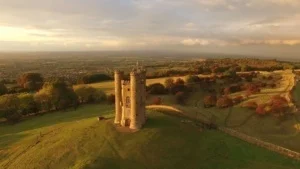
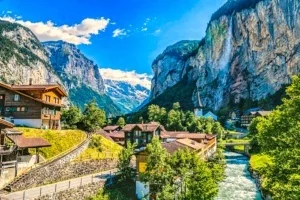
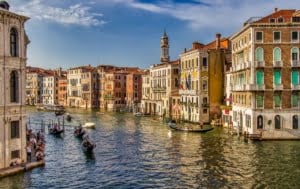

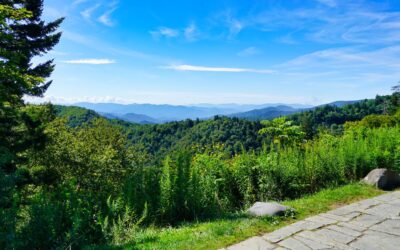
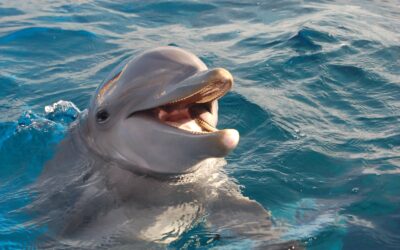



I think a lot out there should rush into your blog and check this amazing information. There are great and detailed. Thanks guys.